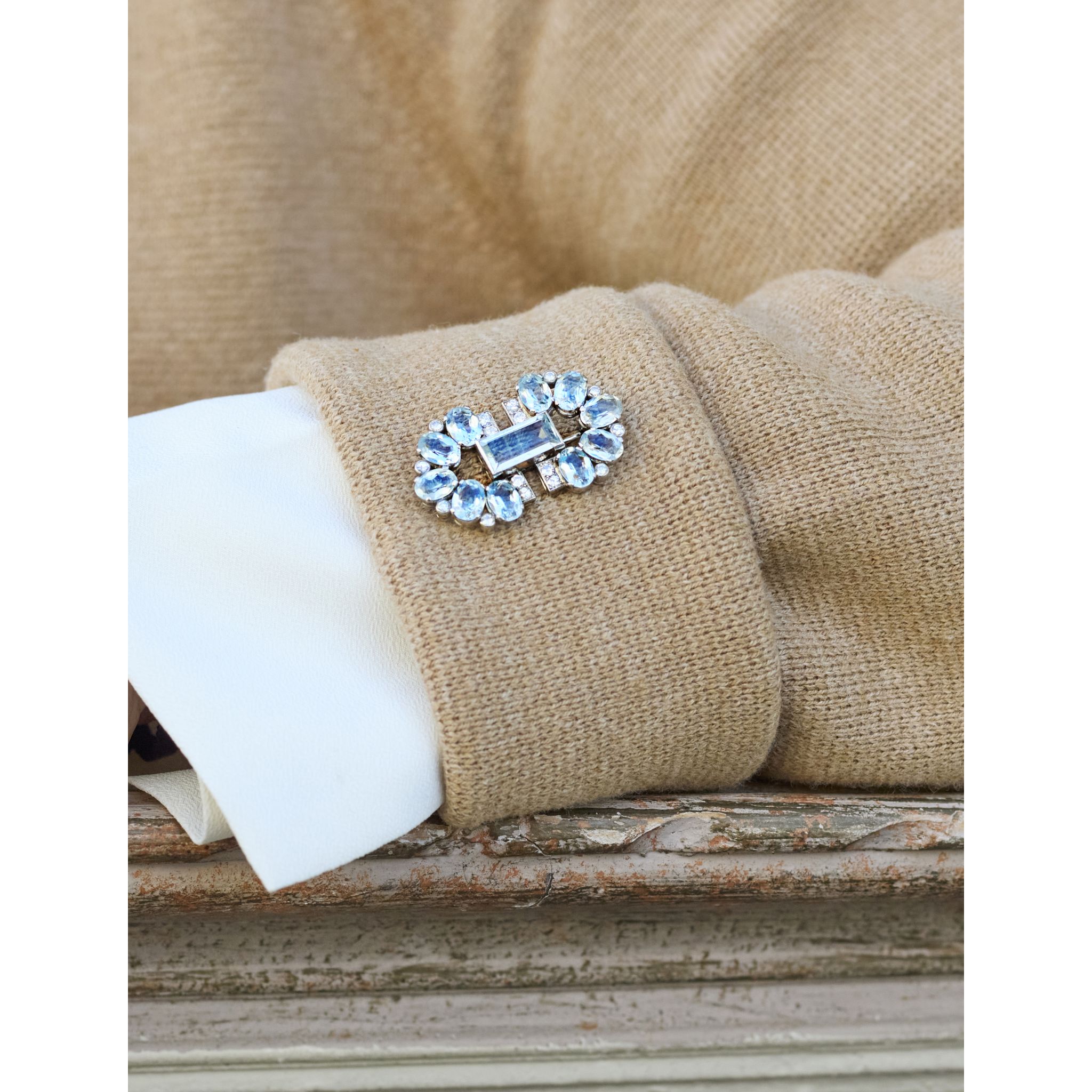Cartier: An aquamarine and diamond brooch
circa 1935
Estimate: £2,500 - £3,500
Auction: 29 April 2025 from 14:00 BST
Description
Designed as two demi-lunes, composed of oval-cut aquamarines and brilliant-cut diamonds, connected by a rectangular step-cut aquamarine, diamonds approx. 0.60 carat total, signed Cartier London, numbered, width 3.5cm
Provenance
Purchased in the 1930s from Cartier. The original owner was an English socialite who had a home in Kent and was good friends with Lady Vita Sackville-West, the well regarded author, who lived nearby at Knole House. Hence by descent.
Footnote
Following the US Stock Market Crash in 1929, the global economy felt the shockwaves. Although disproportionally affecting those in lower economic classes, the jewellery industry was not untouched.
As prices, supply and demand for top coloured stones, such a rubies, sapphires and emeralds felt the repercussions, so to did the spending power of clients. Jacques Cartier chose to make a unique strategic move. For several years the three Cartier brothers subtly bought up the best quality aquamarines (as well as topaz) on the wholesale market. Jacques Cartier was particularly drawn to aquamarines, as well as topaz, as those stones lent themselves to the rectangular cuts which complimented the architectural style of Art Deco jewels. In order not to alert their competitors that they were planning new ranges of jewels featuring these “semi-precious” gemstones, they would acquire the best gems available, but never so much as to draw attention to themselves.
Cartier’s aquamarine jewellery appears to have been predominantly produced from the London workshop starting in 1932. Several American clients ordered aquamarine jewellery specifically through the New Bond Street London premises. One of the most notable advocates for Cartier’s aquamarine collections was the famed American interior designer Elsie de Wolfe. She commissioned a striking aquamarine spiral halo tiara in 1935, and to complete the look, had her hair tinted blue to match.
Due to their strategic gemstone buying in both London and Paris, when the Cartier store windows were filled with aquamarine and platinum jewels as well as topaz and yellow gold creations, their competitors found it almost impossible to find premium gemstones. If they were offered any, the gemstones would cost substantially more than the Cartier brothers had paid.
See Rudoe, Judy Cartier 1900-1939, British Museum Press, London, 1997, page 263 and Cartier Brickell, Francesca, The Cartiers, Ballantine Books, New York, 2019, pages 323-325.

